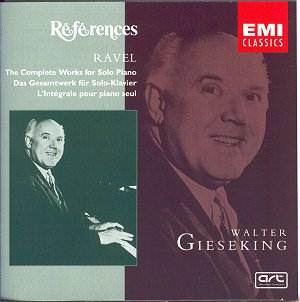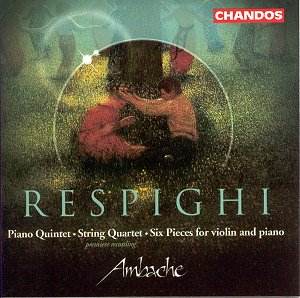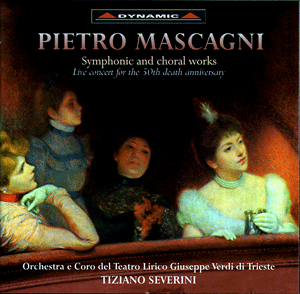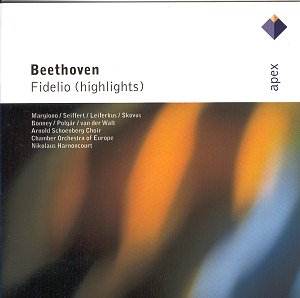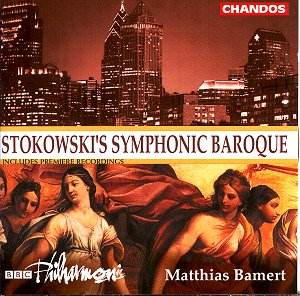 Composer: George Frideric Handel
Composer: George Frideric Handel
Works: Suite from The Water Music, Dead March from Saul, Sarabande and Courante (Dietrich Buxtehude), Tu mancavi a tormentarmi, crudelissima speranza (Antonio Cesti), Suite (Henry Purcell), Jesus dulcis memoria (Tomás Luis de Victoria), Pavane and Gigue (William Byrd), Adagio (from Violin Sonata Op. 5 No. 5) (Arcangelo Corelli), Sicilienne (from Armide) (Christoph Willibald Gluck), Concerto Grosso No. 11 in D minor (from Op. 3) (Antonio Vivaldi)
Performers: BBC Philharmonic Orchestra, Matthias Bamert (conductor)
Recording: 29/2 and 1/3/2000 in Studio 7, New Broadcasting House, Manchester
Label: Chandos CHAN 9930
The latest release from Chandos, Stokowski’s Symphonic Baroque, presents a tantalizing exploration of Baroque music through the lens of Leopold Stokowski’s imaginative transcriptions. This collection, sweeping across a range of composers from Handel to Vivaldi, serves not only as a tribute to Stokowski’s audacious orchestrations but also as a testament to the enduring relevance of Baroque idioms. While Stokowski is often associated with grand interpretations of Russian and Romantic repertoire, this disc invites listeners to reconsider the Baroque legacy, reimagined for a modern symphonic palette.
Matthias Bamert leads the BBC Philharmonic in a performance that is, by all accounts, thoroughly engaging. The orchestration is lush and vibrant, reflecting Stokowski’s characteristic flair for color and texture. The suite from Handel’s Water Music, for instance, is delivered with a buoyancy that underscores its celebratory intent, though the more frenetic moments—such as the final “Alla Hornpipe”—occasionally feel overly polished, as if the exuberance has been tamed. The horns, while technically adept, lack the spontaneity that one associates with Stokowski’s own fiery interpretations, creating a tension between precision and the wildness inherent in Baroque performance practices.
The programming, while ambitious, does encounter a slight structural imbalance. The latter half of the disc, dominated by slower, contemplative pieces such as Purcell’s Suite and Victoria’s Jesus dulcis memoria, risks lulling the listener into a state of somnolence. This sequencing choice may dissuade those seeking a more dynamic listening experience, yet it also invites a more deliberate approach—dipping into the disc at various points can yield delightful surprises without the fatigue of a single continuous listen.
Sound quality is consistently excellent, a hallmark of Chandos recordings, with a clarity that allows individual lines to sing while maintaining a rich orchestral blend. The engineering captures the warmth and resonance of the ensemble, inviting the listener into the heart of the music. Yet, in some passages, particularly during the more intricate counterpoint, one might wish for a touch more delineation to appreciate the interweaving lines fully, echoing the lush textures that Stokowski himself so often amplified.
Compared to previous releases from this series, which explored the likes of Mussorgsky and Wagner, this collection feels both familiar and fresh. The variety of composers provides a broad canvas for exploration, and the inclusion of lesser-known works, such as Buxtehude’s Sarabande and Courante, is commendable. One cannot help but wonder how these composers might have reacted to the orchestral innovations of the 20th century, particularly the use of instruments like the ondes martenot, which adds an intriguing layer to the aural tapestry.
This disc represents a worthy and fitting culmination of the Stokowski transcriptions series from Chandos. For collectors and newcomers alike, it offers a rich trove of Baroque gems reinterpreted through a symphonic lens. The careful craftsmanship of Bamert and the BBC Philharmonic provides ample reason to engage with this recording, ensuring that it stands as a significant entry in the ongoing conversation about the evolution of Baroque music in the modern orchestral canon.
